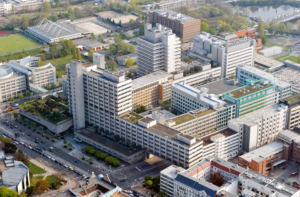Licensing a matter of external innovation in R&D
External innovation is one of the pharmaceutical industry's solutions for overcoming patent cliffs and gaps in innovation. It's based on the insight that the majority of innovations in this sector do not have their origin in Big Pharma, but come from academia and small biotech companies.
Big Pharma can adopt one of two approaches to this discovery. First, it can collaborate with academic institutions to address mainly the early part of the pharmaceutical value chain. Or second, it can conclude licensing deals with small or medium-sized biotech companies or even competitors.
Licensing activities are per se independent from the value chain phase. They occur during both late phase research and at other stages of development. The choice of a partner is primarily driven by scientific and strategic considerations. But even if independent of time and place around the globe and we’re all aware that R&D is global, and doesn’t recognise frontiers experience shows us that those collaborations and deals that are implemented on a European level happen fastest.
One basic need for collaborations and licensing agreements is mutual trust. It’s a prerequisite for all kinds of collaborations and co-operations that can be generated by common project teams moving projects forward by exchanging team members right from the beginning of a licensing agreement, working in the partner company, and if possible, even in common laboratories at the same bench. There is no better way to generate trust. And for simple logistical reasons, European companies find it easier to realise their goals within Europe, rather than across continents.
In any case, win/win situations have to be created if licensing activities are to be successful. In this context it has to be taken into account that business models particularly between small biotech companies and Big Pharma can be very different. While Big Pharma’s final objective is to hit the market with a product as rapidly as possible, a small biotech’s priority might be to sell a project to Big Pharma. The implications are obvious. Big Pharma conducts specific studies mandatory for market entry considerably earlier in the R&D process, while Small Biotech wants to postpone such studies to a later phase. Expectations for the two licensing partners can therefore be different, and have to be aligned from the beginning, as do the financial details of the licensing agreements, including exit scenarios. The era of big up-front payments appears to be over. Milestone-driven payments are the future approach. And other legal and patent conditions also have to be taken into account, even if a project is still far from market access. Potential modifications of indications should be forecast and included in contracts if licensing activities in the sector are to increase significantly.
Jochen Maas
is the General Manager of R&D at Sanofi in Germany, where he is a member of the Global R&D Management Board, the German Management Board and head of the German Hub R&D organisation. Maas has a wide range of experience in all phases of the R&D value chain, including pharmacokinetics, preclinical and clinical development. The biologist and veterinarian who holds a doctorate in veterinary medicine lectures as a professor at the Giessen-Friedberg University of Applied Sciences.


 Bayer AG
Bayer AG
 Picture from Ferdinand Stöhr on Unsplash
Picture from Ferdinand Stöhr on Unsplash